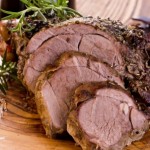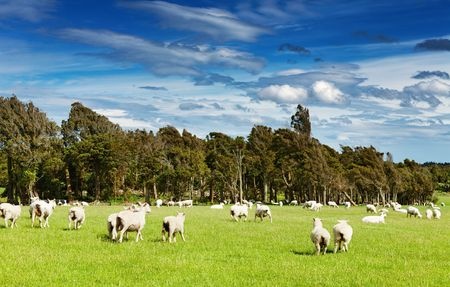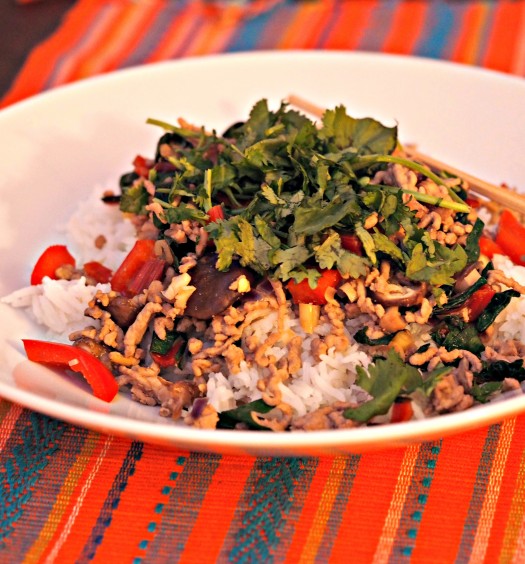Why Easter isn't the right time to eat pasture-fed lamb
For years I never questioned our traditional Easter Lamb lunch. We have turkey at Christmas, and lamb at Easter. The shops and internet bombard us with the latest lamb recipes at Easter, and as a result, it’s taken a remarkably long time to dawn on me that eating lamb at Easter in the UK is quite a silly thing to do.
 Let’s get straight to the point. Lambs are born in spring. Therefore, there is absolutely no way that we can be eating that very same British lamb at Easter. Spring lambs are ready for eating aged 4 ½ to 6 months – that’s approximately August to October. This means that ‘spring’ lamb will never ever be ready at Easter. Instead, we’re more likely to be tucking into it as warm summer nights draw to a gradual close.
Let’s get straight to the point. Lambs are born in spring. Therefore, there is absolutely no way that we can be eating that very same British lamb at Easter. Spring lambs are ready for eating aged 4 ½ to 6 months – that’s approximately August to October. This means that ‘spring’ lamb will never ever be ready at Easter. Instead, we’re more likely to be tucking into it as warm summer nights draw to a gradual close.
So why all the ‘Easter lamb’ recipes? The religious significance of lamb at Easter is probably lost on many of us nowadays anyway. Do chefs really not realise that it isn’t British lamb season? Is it to boost supermarket profits?
But if you’re not bothered by the fact that British lamb isn’t in season at Easter, and do choose to eat it, what exactly are you eating? There are a few alternatives
1. Higher priced, higher food miles, imported lamb – normally from New Zealand. It’s autumn in the southern hemisphere, so to New Zealanders, lamb is in fact in season
2. British lamb born out of season to one of the very few sheep breeds that will breed year round or to sheep artificially stimulated to become pregnant – and reared inside overwinter. The health benefits of pasture-fed lamb are lost with this option.
3. Possibly ‘old-season’ lamb – that is lamb born late last spring but which isn’t quite a year old
4. Hogget (sheep over a year old) or mutton (sheep over two years old) – in which case it shouldn’t be marketed, or priced as more expensive lamb. We love both hogget and lamb – they’re economical options, full of flavour and perfect for a healthy, slow-cook ‘chuck in the oven’ roast but you’re unlikely to find either on supermarket shelves. You’ll need to find local farms, talk to local butchers or check out http://www.soilassociation.org/easter for local organic farms.
Eating lamb at the right time of year (i.e. early autumn) is a much better idea than at Easter – it’s cheaper, tastier and more nutritious.
 Lamb, hogget and mutton are a good source of our couple of red meat portions a week, providing vitamin B12, niacin, zinc and iron – nutrients that we can easily be deficient in. Lamb is a generally ‘fattier’ red meat, but modern research questions the role of saturated fat as the enemy of heart disease (and instead implicates carbs and sugar) means avoiding lamb on the grounds of its saturated fat content also looks unnecessary. In fact, if you choose super-trendy pasture-fed lamb – that’s lamb fed purely on grass, clover and herbs, rather than a mix of pasture and grains or cereals, the nutrient content, health benefits and flavour of the meat are all vastly improved.
Lamb, hogget and mutton are a good source of our couple of red meat portions a week, providing vitamin B12, niacin, zinc and iron – nutrients that we can easily be deficient in. Lamb is a generally ‘fattier’ red meat, but modern research questions the role of saturated fat as the enemy of heart disease (and instead implicates carbs and sugar) means avoiding lamb on the grounds of its saturated fat content also looks unnecessary. In fact, if you choose super-trendy pasture-fed lamb – that’s lamb fed purely on grass, clover and herbs, rather than a mix of pasture and grains or cereals, the nutrient content, health benefits and flavour of the meat are all vastly improved.
Pasture-fed versus ‘ordinary’ lamb has:
- more protein
- more vitamin E
- more lutein (a carotenoid especially beneficial for eye health)
- more Conjugated Linoleic Acid (associated with reduced heart attack risk, lower body fat levels, reduced inflammation and potential anti-cancer properties)
- less total fat (and therefore calorie) content
- more Omega 3 fats – in fact 2-4 times higher. Way back, in those much talked about ‘caveman’ days, we ate small portions of grass-fed (not grain-fed) animals, plants, nuts and seeds, which contained small amounts of Omega 3s. As a result we didn’t need to be popping fish oil supplements to boost our Omega 3 levels. One 2011 study showed that just 4 weeks of eating moderate amounts of grass-fed meat boosted anti-inflammatory Omega 3s and reduced pro-inflammatory fats in the blood.
- Actonel boniva and fosamax esophageal cancer
- Where to buy tribenzor in New York online
- Substitute for drug flomax
- Buy propecia online
- Buy valtrex 1g online from Texas
- Ohio shipping floxin 300mg
- Where to buy antabuse 250mg in Kelowna online
- Belgium geodon
- Generic imitrex 100mg from Tallahassee
- Buy minipress online usa
 Lamb is also the one meat I don’t stress too much over if I can’t buy organic; pasture-fed and organic is ideal, but failing that, I’d opt for pasture-fed over organic. Organic lambs can still be fed grain – albeit organic grain. Organic guarantees welfare standards and prevents routine use of medication, but unlike non-organic chickens for instance, non-organic sheep still generally have a nicer life, grazing outdoors. The exception is lambs born out of season and over-wintered inside (i.e. the British lamb available at Easter) – they may not even see pasture at all; it is simply too cold to have them grazing outside all winter and grass doesn’t grow anyway until it’s around 10 degrees centigrade. The meat is also paler and less tasty.
Lamb is also the one meat I don’t stress too much over if I can’t buy organic; pasture-fed and organic is ideal, but failing that, I’d opt for pasture-fed over organic. Organic lambs can still be fed grain – albeit organic grain. Organic guarantees welfare standards and prevents routine use of medication, but unlike non-organic chickens for instance, non-organic sheep still generally have a nicer life, grazing outdoors. The exception is lambs born out of season and over-wintered inside (i.e. the British lamb available at Easter) – they may not even see pasture at all; it is simply too cold to have them grazing outside all winter and grass doesn’t grow anyway until it’s around 10 degrees centigrade. The meat is also paler and less tasty.
So this Easter either at least knowingly understand why you’re buying ‘spring’ New Zealand lamb, seek out some pasture-fed hogget or mutton or simply enjoy British pasture-fed lamb at the end of summer, when it’s at it most delicious and nutritious.
We hope you enjoy this blog post, let us know your thoughts in the comments below or on social media – we’re on Twitter, Facebook, Instagram and Pinterest. And don’t forget to sign up to our newsletter to receive a monthly update of our recipes, nutrition tips and expert advice.





